|
|
 |
KAFAN SET Contents of the bag of journey to afterlife:
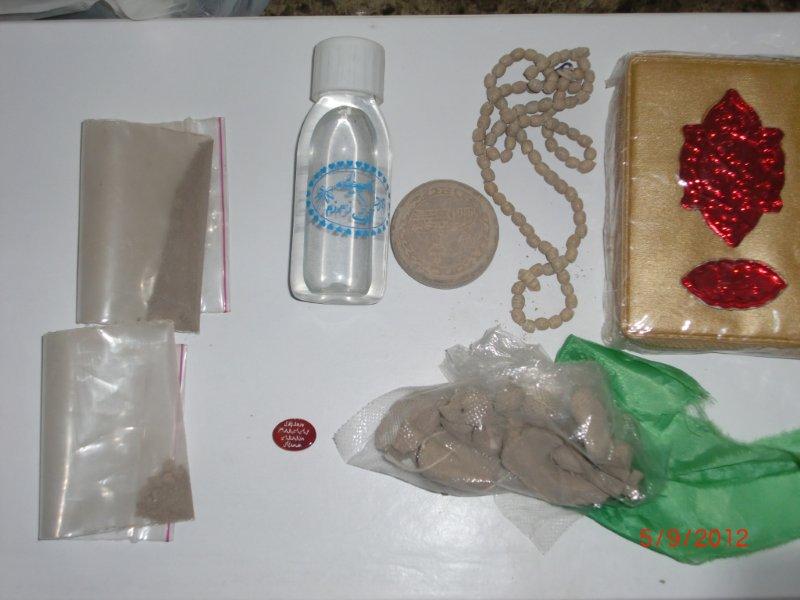
Zamzam ,dust ,aqeeq ,quran
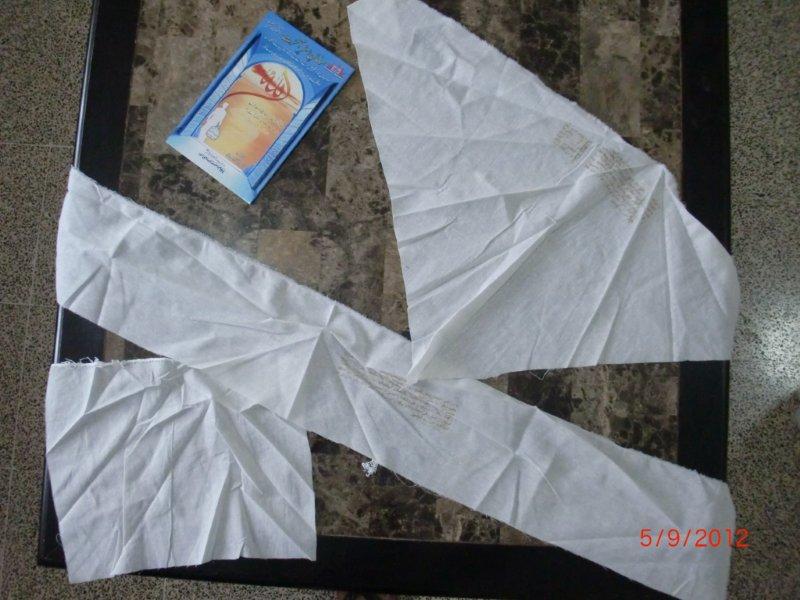
Maqna Belt Hankerchef
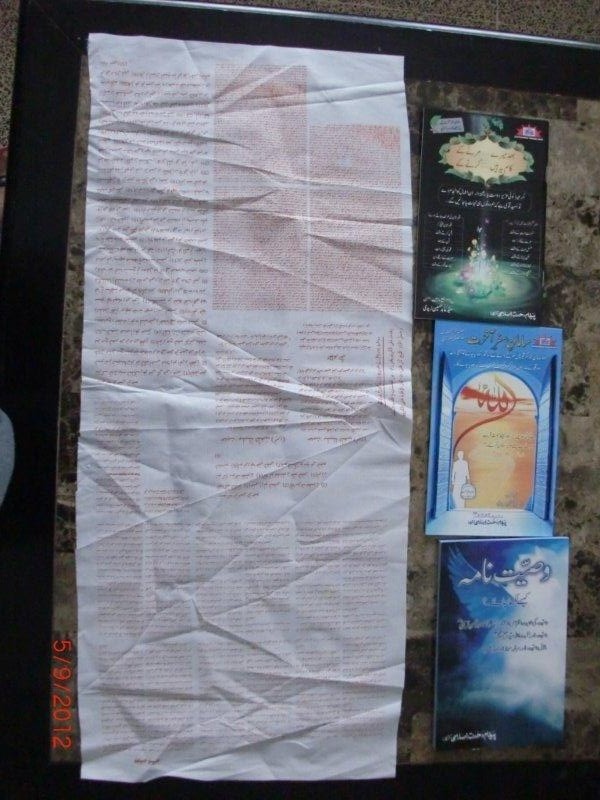
Cloth to wrap sticks - 3 pieces & books

Shirt
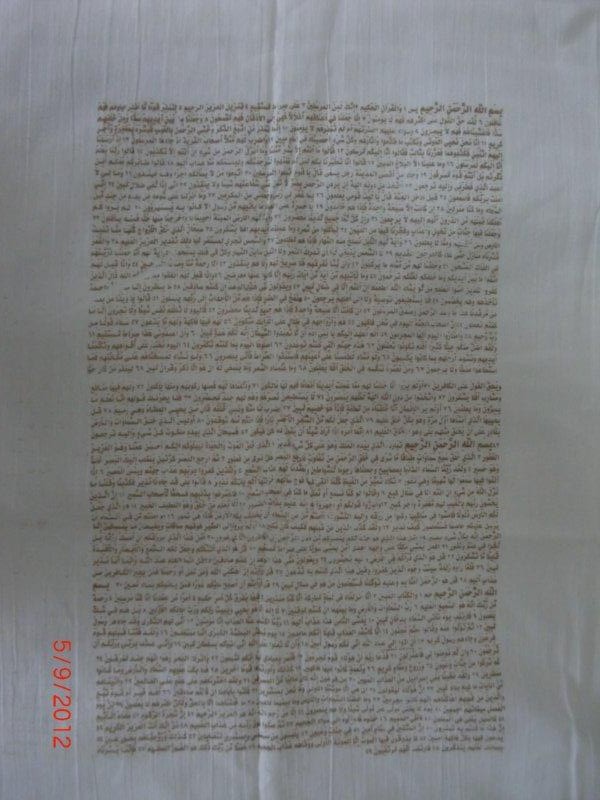
Close up of shirt
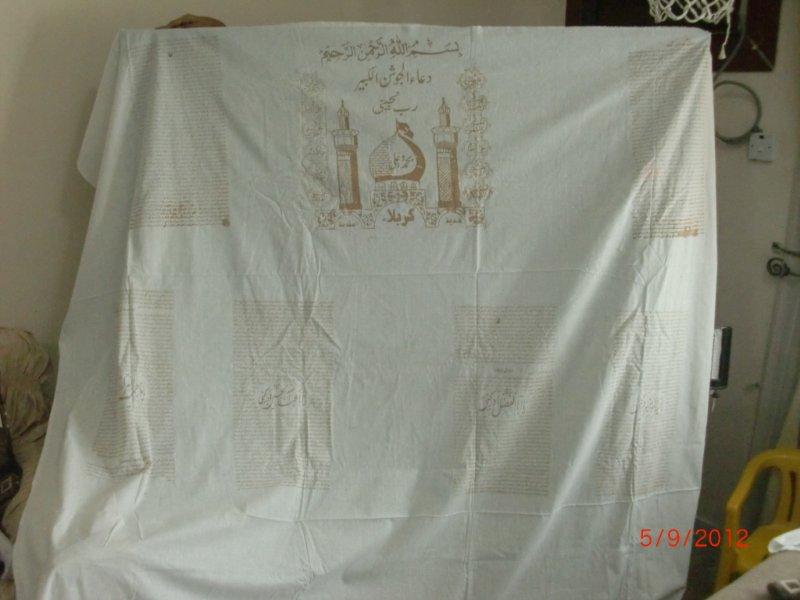
Chador
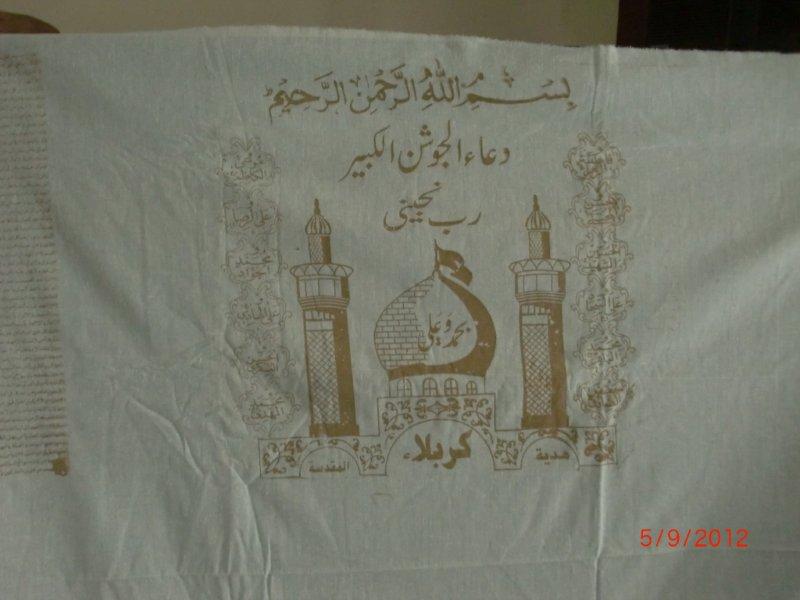
Close up of chador
xxx
Lung ( cloth for bottom part ) - no picture
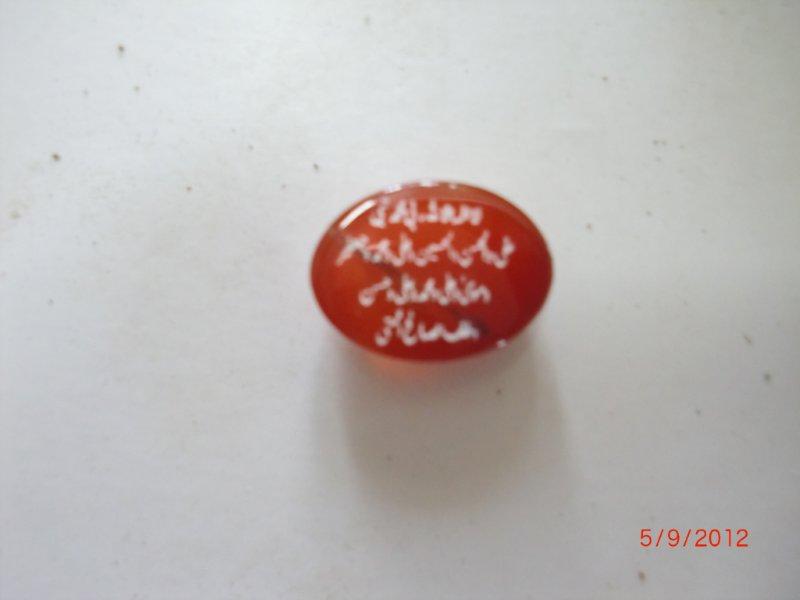
Aqeeq with inscription to keep in mouth
An aqeeq with the inscription of the unity of Allah (swt), the resalat of the Prophet (saws) and the testimony of the Imamat of the Aimmah. The benefit of placing this aqeeq in mouth of the deceased is that inshallah the aqeeq will answer of Munkir and Nakeer on behalf of the deceased. The inscription on the aqeeq is: La ilaaha illallahu rabbi, muhammadun nabiyyi, aliyyun wal hasano wal husayno… (testimony of the imamat of all the Imams) [Reference: Urwatul Wuthqa Vol.1 Page 329]
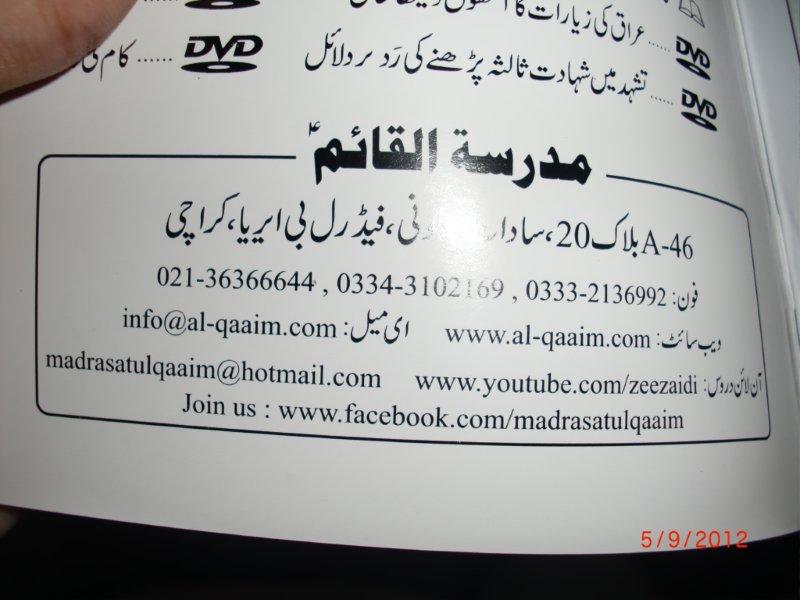
Address of Al Qaaim karachi making the set
Witness Paper click here
Keep Sadqa Money
2. The kafan in this bag has the following characteristics:
· The water of Zamzam has been sprinkled on this kafan.
· Camphor has been sprinkled on the kafan as some ulema have included both these in mustahabaat (recommendations).
· Jawshan-e-Kabir and Sura Mulk (which repels the punishment of the grave) have been written in a vessel with camphor which has then been washed with water, this water has then been sprinkled on the kafan.
Bahrul Uloom writes in his book Durra, it is sunnat ti write these on the kafan as these are the best testimony of Imaan and Islam, hence this will become the best shield for the protection of ones Imaan.
Imam Hussain (as) has emphazised this saying, “My father stressed that I should memorize this dua (Jawshan Kabeer) and write it on the kafan and teach it to my ahlulbayt.” [Urwa, Vol.1 Page 295]
It is because of the stress these hadiths place on these duas that these have been included with the kafan.
3. Dua Jawshan Kabeer and Dua Jawshan Saghir have been written and included with the kafan.. Hadith relate that whoever writes Jawshan Kabir on the kafan Allah (swt) feels haya to punish him.
4. The two couplets that Imam Ali (as) had written on the kafan of Salman Farsi have been included with the kafan. ARABIC 1 – Without taking the baggage of good deeds and a sound heart you have gone in the presence of the Kareem Allah (swt), because when someone becomes a guest of a Kareem, the worst thing for him is that he should take some provisions with him. It is hoped that because of the barkat of these couplets of Amirul Momineen will forgive the paucity of good deeds and mistakes of the deceased.
5. Along with the kafan is a sheet on which the entire Quran has been inscribed. This should be folded and kept on the chest of the deceased as this is a mustahab action. Imam Khomeini’s Tahreerul Waseela Vol.1 Page 68, Urwatul Wuthqa Vol.1 states that the kafan given to Imam Musa Kazim (as) was very expensive and the entire Quran was inscribed on it. It is hoped that inshallah with the barkat of the Quran no punishment can find its way to the deceased.
6. Included with this kafan is the Hadeeth of Silsiltaul Dhahab along with the chain of narrators. This is the hadeeth which Imam Reza (as) had related in front of the muhaddiseen of Neyshapour, and ulema have ordered it to be written on the kafan. (Can be written separately and included as well).
It is appropriate to write the following famous sanad of Silsilatul Dhahab: ARABIC 2
It is better to write another sanad on the kafan as well which is as follows: ARABIC 3
7. Beliefs inscribed on the kafan:
In Bahrul Masaib and Tohfatul Majalis, Imam Sadiq (as) states that to write the beliefs on the kafan with Khake Shifa is a light of the Momin, which protects him from the terrifying darkness of the grave and the questioning by Munkir and Nakeer. With this kafan the unity of Allah (swt), the resalat of the Prophet (saws), the testimony of the Imamat of the Aimmah have been inscribed.
Write: So and so the son of so and so… (write the name of the deceased and name of father of the deceased) ARABIC 4
Translation.
http://www.duas.org/deathbaqsal.htm#kafan
Then comes the stage of enshrouding. The enshrouding person may spread out the fifth piece of cloth, put a little quantity of cotton over it, disperse a little quantity of crumbs (of either the leaves of lote-tree or powdered incense) over it, put some of the crumbs on the two private parts of the dead person, and stuff the anus with little cotton. Then, the buttocks and the thighs must be tied up firmly with the (fifth) piece of cloth. Then, the apron must be tied up from the navel downwards. Then, the dead body must be dressed the shirt over which the wrapper is dressed and over it the special wrap, or the other piece of clothes that replaces it, must be dressed.
With the dead body, two palm-leaf stalks, or stalks of any other tree, must be put. These two stalks must be wet and must be in the size of the arm bone. One of the stalks must be put to the right side of the dead body and stuck to the skin near the loin. The other stalk must be put to the left side between the shirt and the apron. The organs of prostration (i.e. the forehead, the palms of the hands, the knees, and the fingers of the feet) must be stained with camphor. If any amount of camphor remains, it must be put on the chest. Then, the wrapper must be restored to its position and knotted from the sides of the head and the feet. When the dead body is buried, these knots must be unfastened. Then, the dead body must be carried on the bedstead to the prayer-place, where the ritual prayer of the deceased is performed.